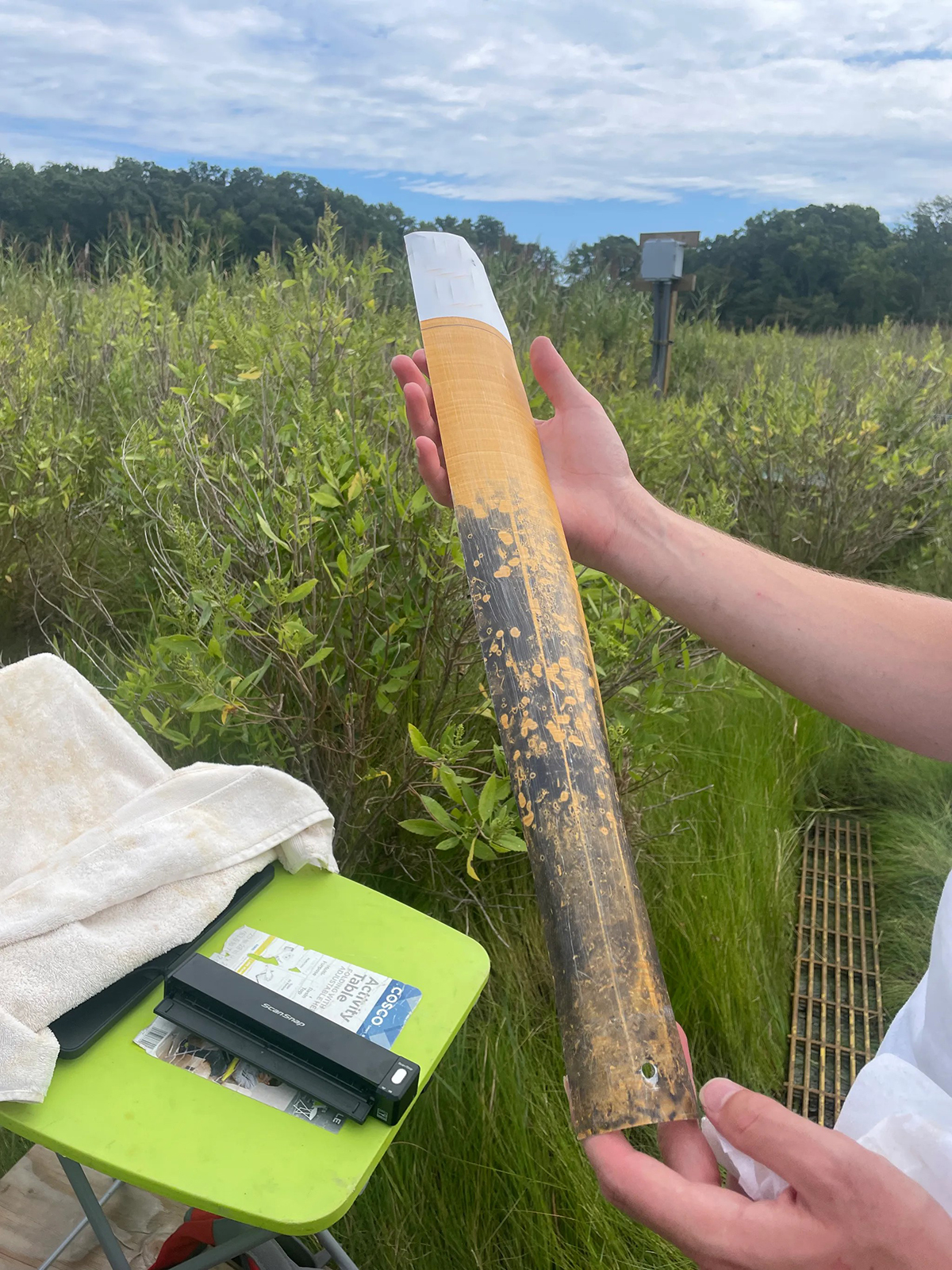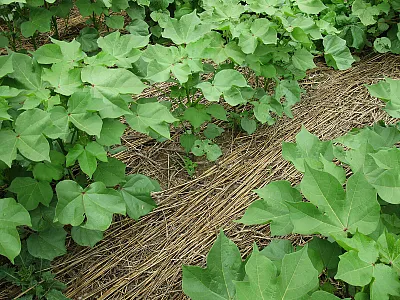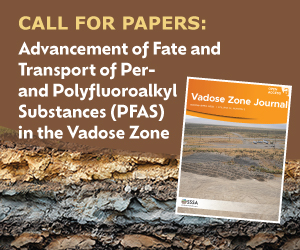Rapid assessment of porewater sulfide using IRIS films

Dissolved sulfide is a compound that forms naturally in wetlands and subaqueous soils of coastal areas, but sulfide can also be toxic to many plants and animals within coastal communities. Traditional approaches to measuring porewater sulfide are time consuming and involve taking samples to the lab for analysis. Indicator of Reduction in Soils (IRIS) devices are PVC films or tubes coated with an iron oxide paint that can be inserted into the soil for a short time to obtain an immediate visual assessment and then later analyzed for more detailed quantitative information.
During the last few years, significant advances in IRIS technology, as well as recent advances in digital image acquisition and image processing, have enhanced the ability of researchers to use IRIS for quickly and thoroughly quantifying porewater sulfide levels. A study published in the Soil Science of America Journal introduces new tools for deploying IRIS under water in subaqueous soils and demonstrates the utility of new digital technology for image acquisition and analysis, providing more detailed quantitative information. This work illustrates how porewater sulfide levels may differ dramatically between soils and may be useful in understanding biological impacts in marsh and benthic coastal environments.
Dig deeper
Rabenhorst, M. C., Wyss-Gallifent, J., Kim, J. D., Park, C. E., Ortez, & Wessel, B. M. (2025). Advances in technology for using Indicator of Reduction in Soils (IRIS) to quantify porewater sulfide levels in the coastal zone. Soil Science of America Journal, 89, e70035. https://doi.org/10.1002/saj2.70035
Text © . The authors. CC BY-NC-ND 4.0. Except where otherwise noted, images are subject to copyright. Any reuse without express permission from the copyright owner is prohibited.










